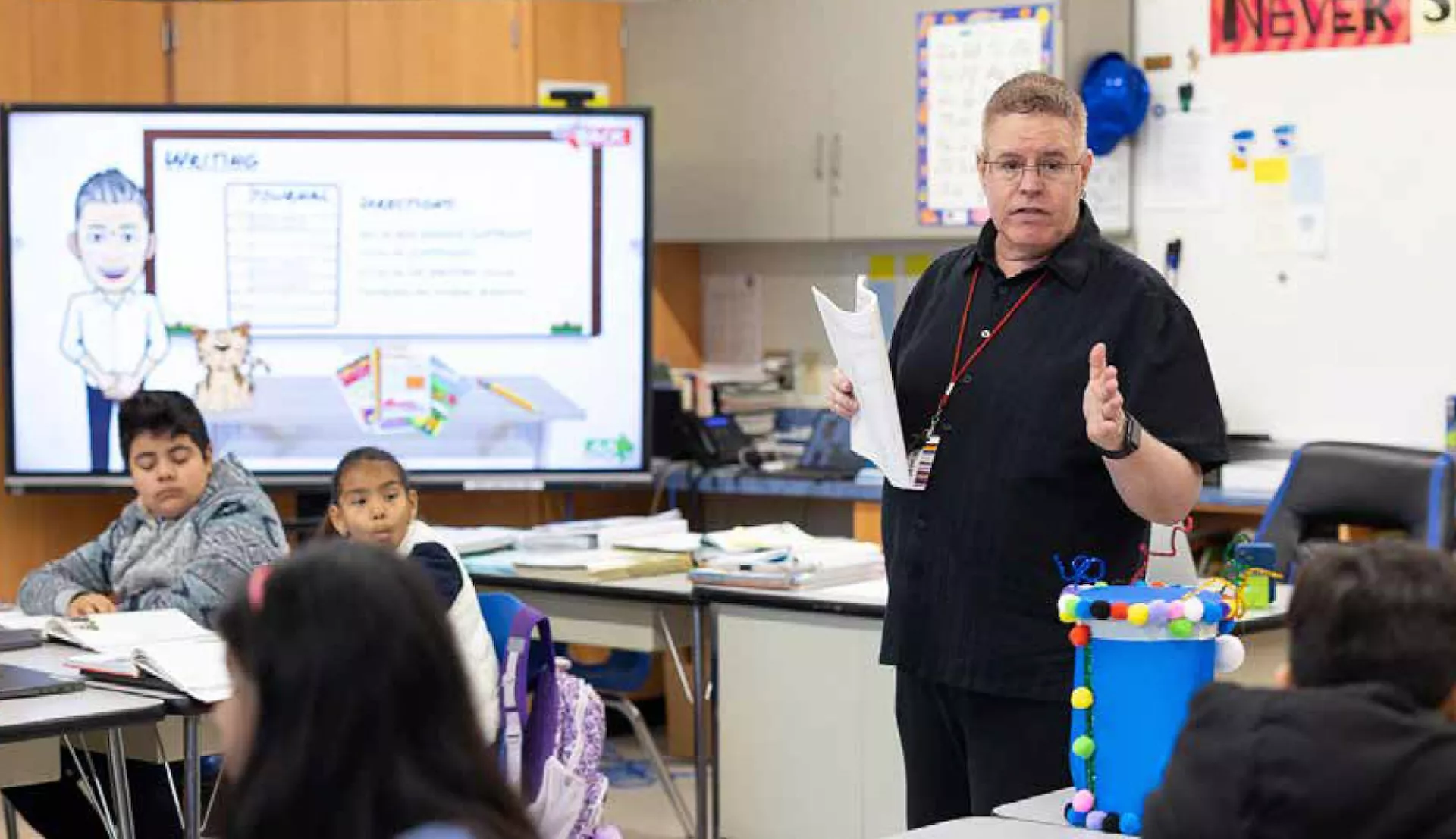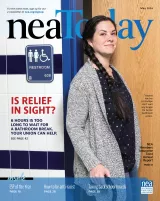The year 2011 was a turning point for LGBTQ+ rights. It marked the end of the military’s “don’t ask, don’t tell” policy; New York became the sixth and largest state to allow same-sex marriage, in addition to Washington, D.C.; and then-President Barack Obama’s administration declared the Defense of Marriage Act—a 15-year-old law that defined marriage as a union between a man and a woman—to be unconstitutional, declining to defend the law in court.
That same year, California took a major step forward for LGBTQ+ students. The state passed the Fair, Accurate, Inclusive, and Respectful
Education (FAIR) Act, becoming the first state to require that K–12 schools include LGBTQ+ people in social studies and history curricula.
The change was desperately needed, says C. Scott Miller, a fifth-grade teacher in Orange County, California, who worked to pass the FAIR Act and helped review textbooks to ensure they were inclusive, based on the law.
“Everybody has a place inside of the classroom and society, and everyone has something to offer,” says teacher C. Scott Miller about the benefits of California’s FAIR Act.
At the time, Miller recalls, homophobic slurs were common among elementary-age students.
“Anything not considered ‘normal’ in someone else’s eyes would be met with, ‘That’s so gay,’ or ‘no-homo,’” he says. “It was hiding in plain sight that kids were questioning the student’s perceived sexual orientation or gender identity.”
Lives are at stake
The impact of subtle and overt bullying, harassment, and lack of acceptance of LGBTQ+ students is a matter of life and death. According to The Trevor Project’s “2023 U.S. National Survey on the Mental Health of LGBTQ Young People”—which polled 28,000 LGBTQ+ people ages 13 to 24—some 41 percent of respondents said they seriously considered attempting suicide in the prior year.
“When students feel they are not welcome, their ability to learn and thrive diminishes,” says Anthony Brisson, of NEA’s Human and Civil Rights department.
“Safe, affirming, and welcoming schools are a core element of student success,” he adds. “This happens only when LGBTQ+ students believe they are accepted and respected, regardless of their sexual
orientation or gender identity.”
Better laws can help
The FAIR Act has made a difference, Miller says.
“There had not been any LGBTQ role models in our school material,” Miller says.
After the law passed, if an elementary school book included a picture of Ellen DeGeneres, it wasn’t enough to describe her as a comedian.
“Because she’s a lesbian, we had to make sure people knew that,” Miller says. “We made sure that anyone who was LGBTQ was labeled as an LGBTQ American. No different than African American, Mexican American, or any other group.”
He adds: “When students see a person, a positive role model who looks like them in social science books, they have hope for their future, because it normalizes their experience,” he says. “For other students unfamiliar with LGBTQ experiences, it helps to break down barriers.”
This is especially important today, Miller says. “We’re going through this very conservative wave of legislation. Our young people are going to see that … repressing people is not a good idea, and when they’re older, they’ll work to change it,” he says. “I have great hope for
the future.”
A Timeline of Progress
Many states have followed California’s lead in requiring an inclusive curriculum:
2019
New Jersey becomes the second state to require instruction that accurately portrays the contributions of LGBTQ+ people and people with disabilities.
Colorado and Oregon pass laws requiring inclusive curricula. Oregon’s law includes LGBTQ+ people, people with diverse racial and religious identities, and other marginalized groups.
2020
Illinois and Nevada require all K–12 public schools to include LGBTQ+ contributions in state and U.S. history curricula.
2023
Vermont’s Champlain Valley School District, the largest in the state, unanimously passes a policy that codifies rights for transgender students, including: A right to privacy; a right to have their names and pronouns used; and a right to access bathrooms and play in sports that match their gender identities.
Why Pronouns Matter
Pronouns affirm gender identities and create safe spaces. When an educator is misgendered—meaning they are called the wrong pronoun or honorific, such as Mr., Ms., or Mrs.—it communicates that a person’s identity is not seen as important and can feel disrespectful, harmful, and even threatening to a gender-diverse person.
California teacher Lee Wygand identifies as nonbinary, transgender. For years, they have been the sole educator in their school to introduce themselves with they/them/their pronouns.
While many of their cisgender peers include pronouns in their email signatures, they do not state them at meetings. “Therefore, my pronouns are overlooked, and I’m misgendered constantly,” said Wygand in an address to the 2023 NEA Representative Assembly, in July.
“This leaves me and other people who are nonbinary … feeling marginalized when our pronouns are ignored and we’re misgendered,” they added.
Wygand encourages colleagues, if they’re comfortable, to share pronouns in email and in meetings.
National Education Association's Pronoun Guide
To learn more, download NEA’s guide to pronouns at nea.org/PronounGuide.



